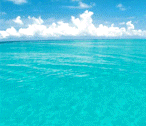
Your first stop!! |
|
||
| Home | Accomodation | Tours | Nightlife | Restaurants | Promotions | Transfers | Weather | Newsletter | |
| Destinations |
| Cancun |
| Isla Mujeres |
| Cozumel |
| Riviera Maya |
| Styles |
| Adults Only |
| Family |
| Reservations |
| Cancun Hotels |
| Cozumel Hotels |
| Isla Mujeres Hotels |
| Riviera Maya Hotels |
| Tours |
| Transfers |
| Car Rental |
| Promotions |
| Information |
| Community Forum |
| Maps |
| Events |
| Weather |
| General |
| Currency |
| Tips |
| Links |
| About Us |
| Contact |
| Privacy |
| Security |
Then, in the late 1960’s, the government took interest in a remote sandbar on the eastern shore of the Yucatán Peninsula. The resort of Cancún (kahn-KUHN) was born, transforming not only a frontier region of Mexico, but also Mexico’s identity from a "Pacific Coast-only" destination. It all started in 1976 when the Mexican government, recognizing the importance of tourism to the country’s economic future, began a detailed search to pinpoint ideal sites for tourism development. Cancún emerged as the government’s top candidate. Still, the new resort reached the 1980’s as a relatively small and undiscovered destination with a dozen or so hotels. A building boom in the mid-1980’s finally vaulted Cancún into the global tourism arena as THE resort of the ‘90’s. In fact, Quintana Roo State now garners 35% of Mexico’s annual tourism revenue-a whopping $3 billion annually! From ruins to riches. Cancún has it all, offering an exotic, tropical island setting buoyed by modern comforts and conveniences. In fact, it’s hard to imagine a site better endowed with natural, cultural, and man-made attractions. Technically an island, Cancún’s resort zone is a 22.5-km-long slender ribbon of sand, shaped like the number seven. Its stunning beaches must be seen to be believed: silky smooth, sugar-white sand, lapped by the turquoise and emerald waters of the Caribbean. Cancún is comprised of three distinct but integrated areas: the City of Cancún, a raffish boomtown of 300,000 people, popular for shopping, dining, less expensive accommodations; the ecological reserve-lovely lagoons and mangroves; and the resort zone, and island. Development is designed around an ecologically-sensitive master plan, divided into three phases. Phase two is completed, Phase three will include 4,500 new hotel rooms, a marina, more shopping malls/restaurants in the area between the airport and Punta Nizuc. A well planned layout and modern infrastructure give the destination a polished (although mostly un-Mexican) appearance. The area’s history
is rich with Mayan influences. The Yucatán Peninsula is
where Mayan culture flourished for centuries prior to the
Spaniard’s arrival in 1519. Over 1200 archaeological
sites are scattered within a few hour’s drive from
Cancún. Many sites have been wonderfully restored, while
others are still shrouded by tangled jungle vegetation. Even Cancun’s ultra-modern resort zone harbors ruins dating to the 12th century. Popular day tours to sites like Tulum, Cobá, and Chichén Itzá afford visitors t he opportunity to appreciate the work of one of the world’s most advanced ancient societies. Beyond the area’s famous ruins, the Mayan culture has survived despite tourism’s rapid encroachment. In fact, much of Cancun’s population is of Mayan descent. With natural and cultural wonders as a backdrop, developers have built Mexico’s most dazzling offering of creature comforts. Recent lodging improvements (there are over 20,000 hotel rooms) include the debut of several in-town properties that cater to budget-minded visitors. The conversion of several hotels into all-inclusive and quasi all-inclusive (free food/beverage without activities) is also of note. Timeshare is also on the rise, although roaming salespeople have had their wings clipped by a recent ban o street sales solicitations. Recent additions to Cancun´s entertainment attractions include the spectacular "Forum-By-The-Sea" entertainment complex, a luxury offshore casino ship, a state-of-the-art Convention Center (a $ 30 million facility with over 150,000 sq. Ft. Of meeting space), an annual marathon, a new Parque Nizuc water park, and an array of new dining and shopping options. Shopping is top notch, with over a dozen American-style shopping malls. Dining options (there are over 200 restaurants) with over a dozen American-style shopping malls. Dining options (there are over 300 restaurantes) include every imaginable fast food chain along with gourmet seafood, Asian, Caribean, American and Mexican specialties, to name a few. Outdoor recreation-water sports, in particular - is first rate. Sports enthusiasts can choose from AquaWorld (a new water sports center), two 18-hole golf courses, and several water-bound adventure activities (submarine rides to jetski tours). Under the leadership of new State Tourism Secretary Guillermo Martinez Flores, the long awaited Puerto Cancún project is moving forward. Development will include a 500-slip marina, 1100 residential lots, an 18-hole golf course, and 7000 units of mostly high end lodging. For those looking to roam, the area abounds with sightseeing treasures. Stretching 480 km. To the south along the Yucatán’s eastern shore is the Riviera Maya region. This scenic and unspoiled coastal zone is emerging as one of Mexico’s newest resort playgrounds. Several new all-inclusive properties have opened, and there’s still plenty of off-the-beaten-path exploring. Dozens of remote coves and deserted stretches of jungle-lined white sand beach are easy to reach. There are also many archeological sites here, ranging from magnificent, fully-restored ancient cities to mysterious, unexcavated ruins. (See "Riviera Maya" chapter for more details). Cancún succeeds in combining the best of Mexico and the Caribbean into one package. And while some dislike the resort for its immense size and unabashed commercialism. there is no denying the area’s seductive appeal. Note: An excellent resource on Cancún is the guide. "Cancún Tips". Cost is $3.00/copy and is available upon arrival at the Cancún airport. |
||||||||


